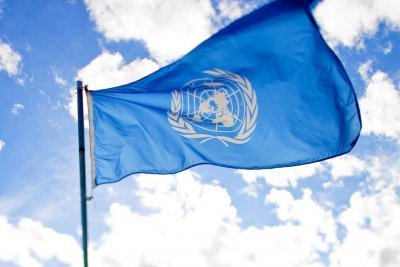UN Publishes 2019 World Drug Report
On June 26, the United Nations Office on Drugs and Crime (UNODC) released the 2019 World Drug Report, which consists of five booklets. Separate chapters are dedicated to depressants, stimulants, marijuana, and hallucinogens.
Cultivation and Production of Marijuana and Hashish
From 2010 to 2017, marijuana was cultivated in 159 countries, home to 97% of the world’s population. The UN compiled a list of countries with the largest volumes of marijuana cultivation:
- North America: Mexico, USA, and Canada
- South America: Paraguay, Brazil, Colombia, Peru, and Chile
- Central America: Guatemala and Costa Rica
- Caribbean: Jamaica
- Africa: Morocco, Nigeria, South Africa, Congo, and Ghana
- Western and Central Europe: Netherlands, Italy, United Kingdom, Spain, Belgium, Albania
- Eastern Europe: Russia and Ukraine
- Asia: Afghanistan, Pakistan, Lebanon, Kyrgyzstan, Tajikistan, India, Nepal, Indonesia, and the Philippines
- Oceania: Australia and New Zealand
In 2017, authorities seized 5,109 tons of marijuana and 1,161 tons of hashish. The top regions for confiscated marijuana and hashish are South and North America (49%) and Asia (18%). Africa accounts for 17%, and Europe for 15%. The record for confiscated marijuana and hashish was set in 2004 at 8,200 tons. In most countries, the area under marijuana cultivation is increasing, with a global rise of 50% from 2010 to 2017. Marijuana is grown outdoors in 80 countries and indoors in 55 countries.
Morocco leads in hashish production (25%), followed by Afghanistan (20%), with Lebanon and Pakistan sharing third place (6%). The top marijuana producers are Paraguay (20%), the USA (12%), and Mexico (8%).
Demand for Marijuana
Marijuana remains the most popular drug worldwide. About 3.8% of the global population (188 million people) aged 15 to 64 have used marijuana at least once. From 1998 to 2017, the number of marijuana users increased by 30%. Usage rates are 6.4% in Africa, 2% in Asia, 8.4% in North and South America, and 7% in Western and Central Europe. Among European countries, France has the highest rate of marijuana users (11.1%), followed by Italy (10.2%) and Spain (9.5%).
Regulation of Marijuana
Recreational marijuana use is legal in 10 U.S. states and the District of Columbia, while 33 states allow medical use. Marijuana is regulated similarly to alcohol: citizens aged 21 and older can purchase cannabinoid products, and businesses can obtain licenses for cultivation, production, and distribution. In most states where marijuana is legal, individuals may possess up to 28.5 grams and grow up to six plants at home. Marijuana companies pay income taxes ranging from 10% to 37%. The most popular products on the market are marijuana, vape liquids with cannabinoids, concentrates, and edibles.
Canada legalized marijuana on October 17, 2018. All adults (18 and older, or 19 in Quebec and Alberta) can buy, possess, and grow marijuana. Canadians are allowed to possess 30 grams of marijuana, 150 grams of raw material, 450 grams of edibles, 2,100 grams of liquid, 7.5 grams of concentrates, and 30 seeds. Patients with a prescription can possess up to 150 grams. As of now, 359,292 Canadians are registered medical marijuana users, up from 23,930 in 2015.
Uruguay lifted its ban on marijuana in 2013. Residents aged 18 and older can purchase marijuana after registering with the National Institute for the Regulation and Control of Cannabis. Citizens can choose one of three options:
- Buy products at licensed pharmacies
- Join a cannabis club
- Grow the plant at home
The law allows the purchase of up to 480 grams of marijuana per year. Authorities permit the cultivation of strains containing either 2% THC and 6-7% CBD, or 9% THC and 3% CBD. There are 16 pharmacies selling marijuana in Uruguay, serving 34,696 people. The country has 115 cannabis clubs with 3,406 members, and 6,965 Uruguayans grow marijuana at home. Most people do not register with the government program and instead buy or grow marijuana illegally. Approximately 162,000 people in Uruguay (9.3% of the population) use marijuana, but only 45,067 do so legally.



